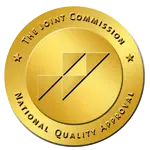At Pathways Recovery Center, we recognize the profound difficulties involved in overcoming addiction to fentanyl, a synthetic opioid that is significantly more potent than most other opioids. According to the Centers for Disease Control and Prevention (CDC), synthetic opioids, including fentanyl, are currently the most common drugs involved in drug overdose deaths in the United States. In 2021, nearly 88% of opioid-related overdose deaths involved synthetic opioids.
Our detoxification programs are carefully designed to manage the risks associated with fentanyl and opioid addiction withdrawal safely. Medically supervised detox ensures that withdrawal symptoms are managed effectively under the constant care of healthcare professionals. This stage is crucial, as it addresses both the physical and psychological challenges of withdrawal, providing a safer transition through what can be a highly uncomfortable process.
Following detox, our comprehensive residential treatment program provides a supportive environment where individuals can continue their recovery journey. The program includes individualized therapy, group sessions, and educational workshops that collectively address the underlying causes of addiction and equip individuals with the skills necessary for sustained sobriety. At Pathways Recovery Center, we are committed to supporting each client through their unique path to recovery, ensuring they have the tools and support necessary for a successful long-term outcome.
Fentanyl is a synthetic opioid that stands out for its extreme potency. It is up to 50 times stronger than heroin and about 100 times more potent than morphine. Originally developed for pain management in medical settings, particularly for severe pain related to surgeries and chronic conditions, fentanyl has also found a dark place in illicit drug markets. Its high potency not only makes it highly effective for pain relief but also significantly increases its potential for addiction and misuse.
The primary action of fentanyl is on the brain’s opioid receptors. It binds to these receptors much more tightly than other opioids, leading to enhanced effects of dopamine release, which is the neurotransmitter associated with pleasure and pain relief. This results in intense euphoria and significant pain suppression, but it also suppresses vital physiological functions like breathing. While discussing the physical characteristics of fentanyl, many users are unaware of its bitter taste, which can be an indicator of its presence. Knowing what does fentanyl taste like can help identify if fentanyl has been mixed into other substances, a common and dangerous practice in illicit drug markets.
The use of fentanyl, whether medically prescribed or illicitly obtained, carries substantial risks due to its potent nature. Some of the direct effects include:
However, the potency of fentanyl also means that the risk of overdose is extremely high, especially when taken without medical supervision or when its presence is unknown in illicit drugs. The risks of accidental fentanyl consumption are heightened when users do not know what they are taking. Understanding what does heroin look like is crucial as fentanyl is often stealthily mixed with heroin, which can vary from a fine white powder to darker, tar-like substances. Overdose can lead to:
Additionally, the illicit manufacture and mixing of fentanyl with other drugs like heroin or cocaine further exacerbate its dangers. Many users may be unaware that fentanyl has been added to these substances, significantly increasing the likelihood of unintentional overdoses.
Understanding these risks and the characteristics of fentanyl is crucial for anyone affected by its use, whether directly or indirectly. At Pathways Recovery Center, we focus on educating our clients and their families about these dangers and the importance of medically supervised interventions for safe detox and recovery.
Getting off fentanyl safely requires a structured and medically supervised approach due to the opioid’s high potency and the severe withdrawal symptoms that can occur. At Pathways Recovery Center, we emphasize a comprehensive, multi-step process to ensure the best outcomes for individuals seeking to overcome fentanyl addiction.
The first step in safely getting off fentanyl is to undergo a medically supervised detox. This phase is critical as it helps manage the intense and potentially dangerous withdrawal symptoms that can occur when stopping fentanyl use. Symptoms can include severe pain, extreme agitation, sleep disturbances, and strong cravings. In a medically supervised setting, healthcare professionals monitor these symptoms around the clock, providing medications and support to reduce discomfort and stabilize the individual’s physical health. Part of planning for a successful detox includes understanding how long do opioids stay in your system. This knowledge is critical in tailoring detox protocols to effectively manage withdrawal symptoms and ensure a clean transition in drug tests used during recovery monitoring.
After detox, transitioning into a residential treatment program allows for continued recovery in a supportive and structured environment. This phase focuses on the psychological aspects of addiction, including individual and group therapy sessions. Therapy helps address the underlying causes of addiction, teaches coping strategies to deal with stress and triggers, and builds a supportive community that fosters personal growth and recovery. The controlled setting of residential treatment also minimizes exposure to risk factors that could lead to relapse.
Once the more intensive phases of treatment are completed, maintaining long-term sobriety requires ongoing support and aftercare. Pathways Recovery Center assists in developing a comprehensive aftercare plan that may include ongoing therapy, support groups, and possibly medication-assisted treatment (MAT) to help manage cravings and reduce the risk of relapse. Engaging in aftercare programs is crucial for sustaining the recovery progress made during treatment and supporting the individual’s reintegration into their daily life without fentanyl.
Each step in this process is designed to provide the necessary tools and support to individuals on their journey off fentanyl, ensuring they have the best chance at a full recovery and a return to a healthy, drug-free life.
Understanding the withdrawal timeline for opioids is essential for anyone preparing to detox from substances like fentanyl. Symptoms can begin a few hours post-last dose and might extend over several weeks, with peak intensity within the first few days. When you enter our program, you will first undergo a comprehensive evaluation to tailor the detox process to your specific needs. This evaluation includes medical history, extent of fentanyl use, and any co-existing health issues or substance use. Based on this assessment, our medical team will develop a personalized detox plan.
Withdrawal symptoms from fentanyl can begin as soon as a few hours after the last dose and may include:
These symptoms can be overwhelming and uncomfortable, but our experienced medical team is equipped to administer appropriate medications and therapeutic support to manage these symptoms effectively. Medications such as clonidine, buprenorphine, and methadone may be used to ease withdrawal symptoms and cravings, facilitating a smoother and more comfortable detox process.
Following detox, transitioning to a residential treatment program is crucial for long-term recovery. Pathways Recovery Center offers structured residential treatment that builds on the foundation laid during detox. Our program includes:
Recovery from fentanyl addiction is an ongoing process that extends beyond the initial treatment phase. At Pathways Recovery Center, we emphasize the importance of aftercare planning to maintain sobriety. This may include ongoing therapy, support groups like Narcotics Anonymous, and possibly medication-assisted treatment (MAT) to manage cravings and reduce the risk of relapse.
If you or someone you care about is grappling with fentanyl addiction and seeking effective strategies for cessation, Pathways Recovery Center offers a compassionate and comprehensive solution. Our dedicated team of addiction specialists delivers an exceptional level of care that begins the moment you contact us and continues throughout your recovery journey. We are deeply committed to supporting each client through a tailored treatment program that addresses the unique challenges posed by fentanyl dependency.
Our facility provides a structured detox process conducted under strict medical supervision to ensure the safety and comfort of our clients during withdrawal. This critical first step mitigates the severe physical and psychological effects associated with fentanyl cessation. Following detox, our residential treatment programs offer a blend of therapeutic modalities, including individual counseling, group therapy, and educational workshops focused on relapse prevention and sustained recovery.
We encourage you to reach out to us to discover more about our specialized treatment options and how we can assist you or your loved one achieve and maintain sobriety. Your journey toward recovery and a healthier, drug-free life begins at Pathways Recovery Center.








